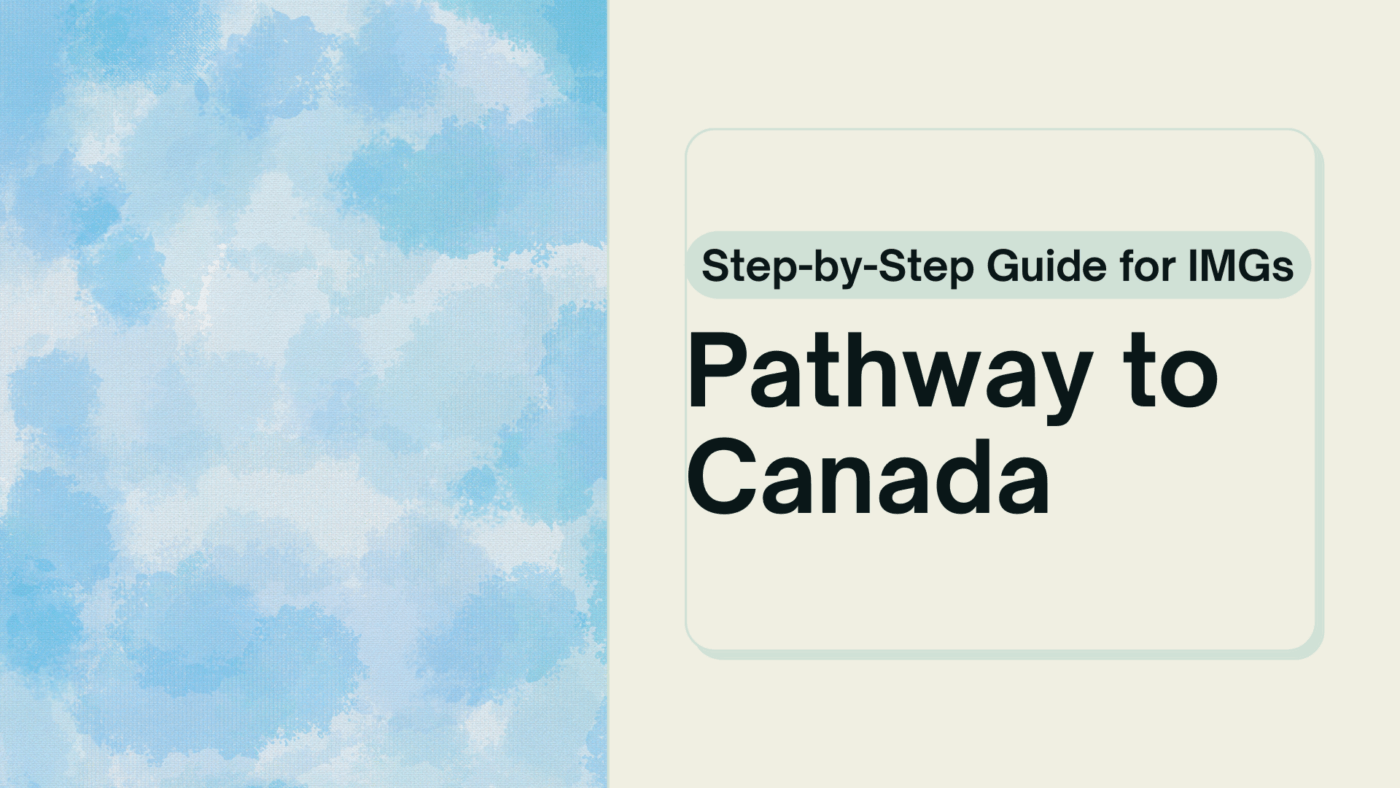Registration & Pathways
How to Work as a Doctor in Canada: Step-by-Step Guide for IMGs
In this article, we’ll walk through the process of how international medical graduates (IMGs) can work as doctors in Canada and the English language requirements you’ll need to meet.
This article is written by OET Bank, where we specialize in helping healthcare professionals prepare for OET and support their overseas career opportunities.
How to Work as a Doctor in Canada
Step 1. Obtain Specialist Certification in Your Home Country
For IMGs, entering a Canadian medical school is extremely competitive and nearly impossible. That’s why the first step is to complete specialist training in your home country.
It’s also important to note that the USMLE cannot be used in Canada, so your local specialist qualification will be the basis for applying.
Step 2. Meet the English Language Requirements
After becoming a specialist, the next hurdle is to achieve the required scores in English proficiency tests such as IELTS or OET.
Most IMGs spend 1–2 years preparing, so it’s best to start early. (See English Proficiency Requirements below for details.)
Step 3. Apply for a Clinical Fellowship
Once the English requirement is met, you can apply for a clinical fellowship at Canadian universities. This usually begins by contacting program coordinators directly via their websites.
Some Canadian university hospitals—such as the University of Toronto and the University of British Columbia—offer fellowship opportunities in highly specialized fields.
Most fellowships are paid, with an average annual salary of CAD 80,000–90,000.
Step 4. Secure a Position at a University Hospital
After working as a fellow for more than one year, you can apply for a restricted provincial license, which allows you to practice as a specialist in Canada.
However, securing employment is essential. Building strong connections, publishing research, or demonstrating clinical expertise during your fellowship significantly increases the likelihood of receiving a job offer at a university hospital.
English Proficiency Requirements
Regardless of province, proof of English ability is mandatory for IMGs who want to practice in Canada.
Here are the main benchmarks:
| Province | IELTS Requirement | OET Requirement |
|---|---|---|
| British Columbia (Vancouver, etc.) | IELTS 7.0 (minimum 7.0 in each section) | OET 350 (minimum 350 in each sub-test) |
| Ontario (Toronto, etc.) | IELTS 7.0 (minimum 7.0 in each section) | OET 350 (minimum 350 in each sub-test) |
Canada differs from other countries in that requirements vary by province.
As of March 2025, both British Columbia and Ontario accept either IELTS or OET.
- IELTS: Focused on academic English. Useful for immigration and higher education, but less directly relevant to clinical practice.
- OET (Occupational English Test): Designed for healthcare professionals. Preparation aligns directly with clinical communication.
In some fellowship programs (1–2 years), universities may also require TOEFL. For example, the University of Toronto often lists TOEFL as standard. However, coordinators usually allow IELTS or OET as alternatives upon request.
As a side note, Canada has historically required different English standards depending on the province. From 2025 onward, however, these requirements are gradually being unified across provinces.
In addition to IELTS and OET, exams such as PTE and TOEFL are also being introduced, though the score thresholds are set relatively high. For this reason, IELTS or OET remains the most practical choice for most IMGs.
Reference: CPSBC
Reference 2: University of Toronto
Comparing IELTS and OET
Which test should you choose?
The best strategy is often to first raise your IELTS score to around 6.5 and then switch to OET.
Why? Because OET materials and qualified teachers are limited. Starting OET too early may leave you without proper resources.
IELTS, on the other hand, is the world’s most popular English test, taken by over 4 million candidates annually, with abundant study materials at all levels.
However, many IMGs struggle to raise IELTS Speaking and Writing from 6.5 to 7.0, sometimes taking years. By switching to OET, many achieve the passing score within a few months, since its Speaking and Writing criteria are less strict than IELTS, even though the Listening section is slightly tougher.
In short:
- IELTS = best for building general academic English
- OET = more practical for healthcare communication and often the faster path to passing
Final Thoughts
Here are the key takeaways from this article:
- Obtain specialist certification in your home country
- Build your general English ability with IELTS
- Use OET for the shortest path to meeting licensing requirements in Canada
For IMGs who are already specialists, meeting the English benchmark is the first hurdle. These requirements are comparable to achieving a strong pass on advanced exams such as Eiken Grade 1.
The exams are demanding, but previous academic English study provides a solid foundation. With proper preparation, your overseas career in Canada is within reach.
If you’re preparing for OET, consider exploring our practice resources at OET Bank. We’re designed not just as mock tests, but as powerful review tools that make it easier to analyze weaknesses and focus on what’s needed to pass.


